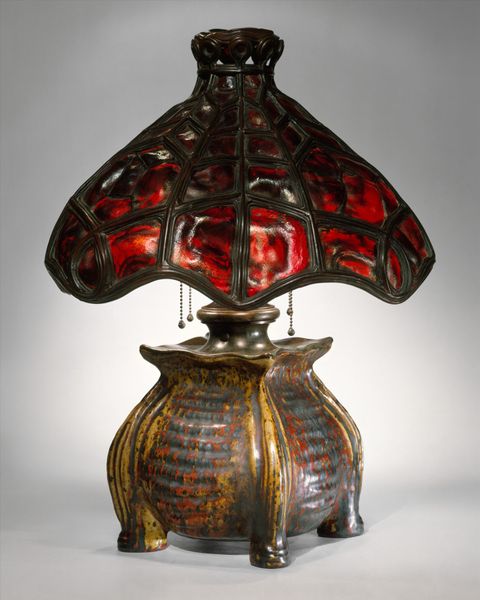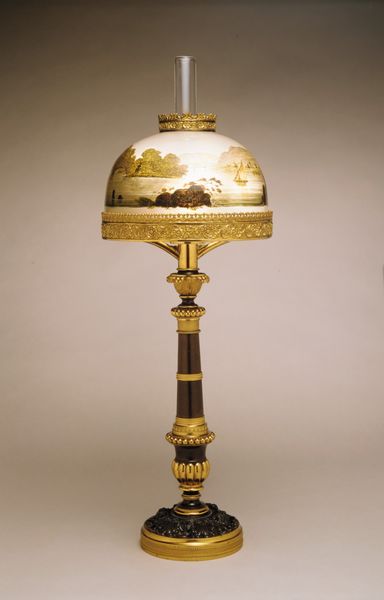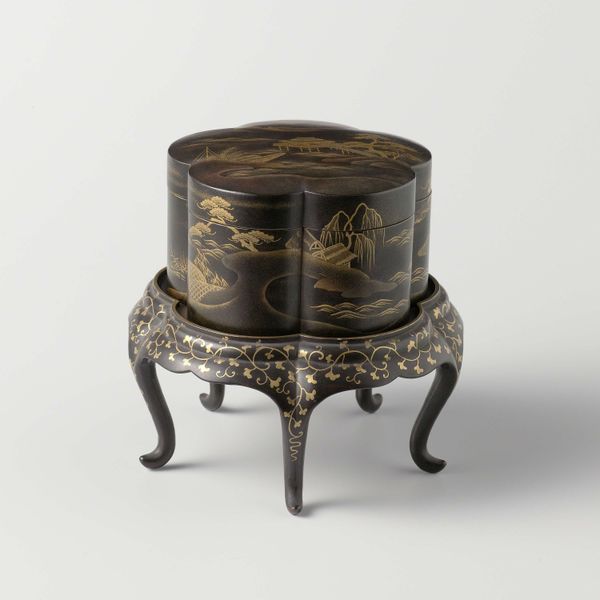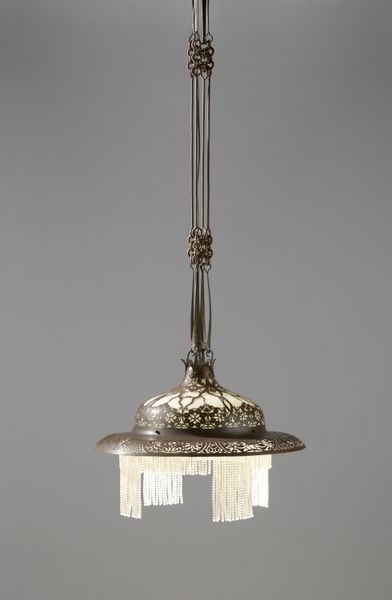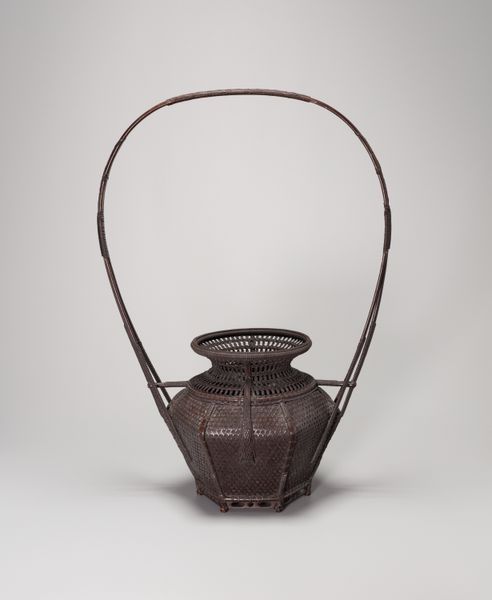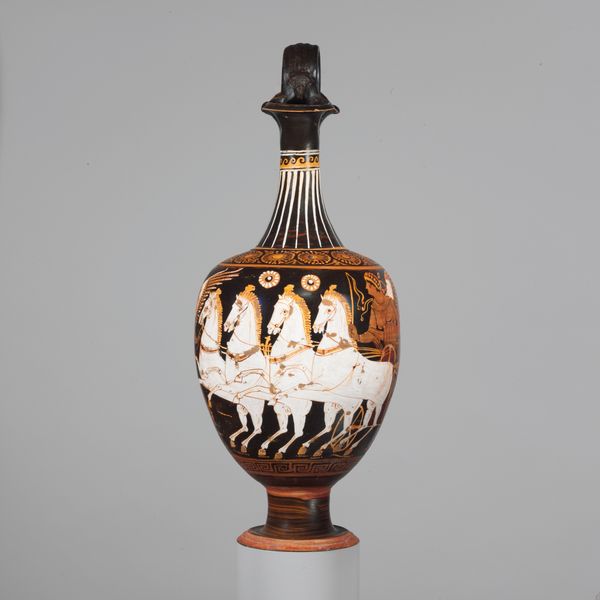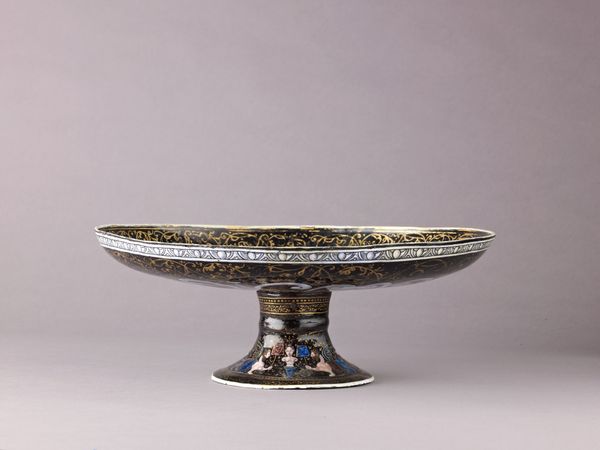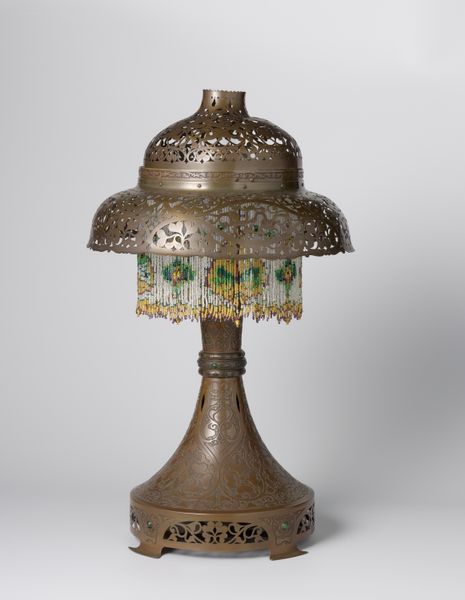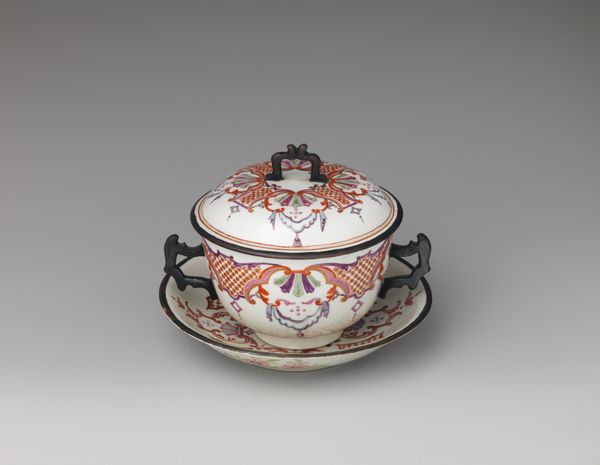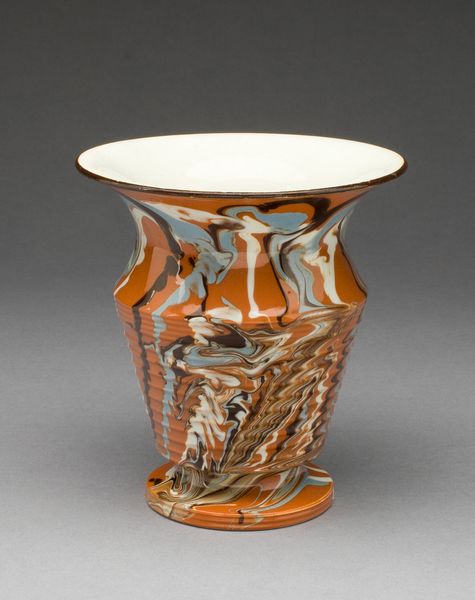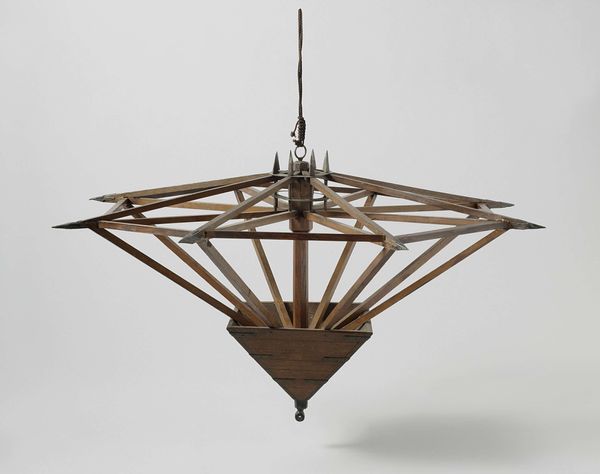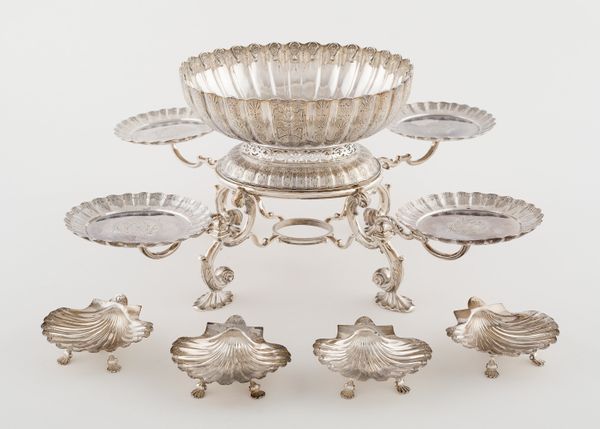
metal, glass, sculpture
#
art-nouveau
#
metal
#
glass
#
sculpture
#
decorative-art
Dimensions: 21 1/8 in. (53.7 cm) Body diameter: 18 1/4 in. (46.4 cm)
Copyright: Public Domain
Curator: This "Table Lamp," created by Tiffany Studios between 1890 and 1900, presents an intriguing confluence of glass and metalwork, now residing at the Metropolitan Museum of Art. Editor: Yes, it is beautiful! The lamp has this really intricate design. I love how the delicate metalwork contrasts with the warm glow of the glass. What can you tell me about it? Curator: Considering its creation during the Art Nouveau period, it’s fascinating to dissect the process. We see readily available industrial materials, glass and metal, fashioned into an object of domestic art. But consider the labor. How many artisans were involved in crafting the glass, casting the metal, and assembling these pieces? Editor: Right! It's easy to get caught up in the beauty and forget the actual making of it. So, the materials themselves tell a story? Curator: Absolutely. This lamp bridges the gap between industry and artistry. It speaks to a period of burgeoning consumerism. Were these materials luxury at the time, or were they widely accessible, thus commenting on an evolving social landscape? Editor: That's a perspective I hadn't fully considered. Thinking about the consumption aspect changes my view quite a bit! Curator: Furthermore, what are we to make of this marriage between form and function? The means of illumination—an expanding energy source—encased in aesthetic excess. Is this an elevation of the everyday or a statement about wealth and leisure? Editor: I see, you are prompting me to think about how this lamp is not *just* a lamp, but is tied to bigger ideas about labor and how goods were made at the time. Thanks! Curator: Precisely. Art becomes less about the ‘artist’ and more about the ‘process’ when we acknowledge that historical works were invariably ‘products’ of their time. It changes how we approach interpretation. Editor: Definitely. I'll be sure to examine those "means of production" more closely moving forward.
Comments
No comments
Be the first to comment and join the conversation on the ultimate creative platform.
